Today we leave Prešovsky Kraj (Tatranská Lomnica) and work our way southeast to Košice in Slovakia with three intermediate stops - another long day of touring.
This looks like an old Windows' advertisement.
Settlement at Kežmarok dates back to the Upper Stone Age. In the 13th century the region contained a community of Saxons, a Slovak fishing village, a Hungarian border post and a Carpathian German settlement. In 1269 Kežmarok received its town charter. It also had the right to organize a cheese market hence the German name Kesmark ("Käsemarkt" - "cheese market").
Here's the town hall:
Here's the town hall:
Castle Kežmarský hrad - the urban compound of the castle originated in 1463. It was built with the aim to defend the town on the site of the medieval community of Svätá Alžbeta (St. Elisabeth). Built originally by Imrich and Ján Zápoľský in the Gothic style, prioritizing the defensive nature of the castle including thick walls and massive bastions. The castle gained its contemporary Renaissance form after extensive rebuilding which proceeded in various stages in the years 1572, 1575, 1583, and 1624. The last phase was completed by Šebastián Thököly, the founder of the famous family, who invited renowned Italian stonemasons, bricklayers and painters to change the original stronghold into a representative family mansion. The buildings in the castle courtyard were equipped with Renaissance arcades, its sumptuous halls were adorned with wall paintings, and the interior of the castle chapel was renewed in the Early-Baroque style.
Curiosity and courage were properties the noble Princess Beata Laská of Kežmarok Castle certainly possessed. Otherwise she would never have set out on a trip accompanied by several burghers from Kežmarok to the not too distant Snow Mountains (today called the Tatras) in 1565. When the princess returned three days later, after having visited Zelené pleso lake, her angry husband was waiting for her at the gate of the castle. He decided to have the Princess interned in the strongest tower where she passed six long years in extremely hard conditions. The only relief for the unfortunate princess was that the tower had two small windows, one overlooking her beloved Snow Mountains, and the other through which she was given food.
Storks make themselves at home - a good omen thing for these parts.
Neue Evangelische Kirche:
Kežmarok had an ethnic German majority until around 1910, and Germans stayed a large minority until the end of World War II. It also had a large and active Jewish community. During World War II, under the auspices of the First Slovak Republic, nearly 3,000 of the town's Jews were deported to German death camps. The town's pre-war Jewish cemetery has now been restored.
At the Greek Catholic church, these people are a church group from Green Bay, Wisconsin on a bus tour out of Poland.
The Articular church is a wooden Lutheran church built following a period of religious persecution, when in 1681 the Congress of Sopron permitted Lutherans to erect two churches in each of eleven counties of the Kingdom of Hungary, nine of which are in present-day Slovakia. The churches were to be completed within 365 days of the cheapest possible materials - this meant wood; even nails were made exclusively of wood. The intent of the construction conditions was to limit the church's ability to withstand time - but the church lives on. The construction was financially supported by Protestants from various countries, including Sweden and Denmark.
The only stone part of the church is its sacristy, originally built in 1593 as a pub outside the city walls. In the 17th century, the Roman Catholic dynasty of Habsburgs persecuted Protestantism, which included territory of present Slovakia at that time. The number of churches was limited to one in each free royal town, Kežmarok being one of them. The site of a new Protestant church had to be chosen by a royal commission. In Kežmarok, a royal commission deliberately chose an ancient pub as a place of worship, in order to humiliate the local Protestant community. The pub was subsequently incorporated into a hastily constructed religious building as a sacristy.
Some of the oldest parts remaining are an epitaph from 1688 and a Renaissance baptistery from 1690. They are the only remaining parts of the first original church. The second wooden church, erected in the Baroque style in 1717, nearly completely replaced the first building. It has the shape of an equal-armed Greek cross. The space can accommodate 1,541 worshipers. According to a legend, circular windows were made by Swedish sailors contributing to the construction. The organ, completed in 1729, is known for its perfect sound despite having only wooden pipes.
The church has been protected by the state as an important historical monument since 1892. In 1985, the Slovak National Council (parliament) proclaimed it a National Historical Monument. An expensive reconstruction followed in the 1990s. The church is one of only five Lutheran wooden churches remaining in Slovakia.
Statue takes a selfie.
Onward we press:
Levoča is a town in the Prešov Region of eastern Slovakia with a population of 14,700. The town has a historic center with a well preserved town wall, a Gothic church with the highest wooden altar in the world, carved by Master Pavol of Levoča, and many other Renaissance buildings.
Rick Steves' tour books do not cover Slavakia (except for Bratislava) - but we score an English tour pamphlet from a well run tourist information office.
"Cage of Shame", punishment cage outside the old Town Hall:
We're nearly done with Levoča, but search for a recommended local eatery hidden somewhere here in the old town walls.
Ah, here it is:
Some days ago we drove past a factory for this regionally loved soft drink - now's my chance to give it a try. My first impression is not entirely pleasing - it's way too sweet.
Gerri tries a soup of some sort - not too shabby.
Now down the highway further...
Spiš Castle was built in the 12th century on the site of an earlier castle. It was the political, administrative, economic and cultural center of Szepes County of the Kingdom of Hungary. Before 1464, it was owned by the kings of Hungary, until the time of King Matthias Corvinus, then (until 1528) by the Zápolya family, the Thurzó family (1531–1635), the Csáky family (1638–1945), and (since 1945) by the state of Czechoslovakia and then Slovakia.
Originally a Romanesque stone castle with fortifications, a two-story Romanesque palace and a three-nave Romanesque-Gothic basilica were constructed by the second half of the 13th century. A second extramural settlement was built in the 14th century, by which the castle area was doubled. The castle was completely rebuilt in the 15th century; the castle walls were heightened and a third extramural settlement was constructed. A late Gothic chapel was added around 1470. The Zápolya clan performed late Gothic transformations, which made the upper castle into a comfortable family residence, typical of late Renaissance residences of the 16th and 17th centuries.
The last owners of the Spiš Castle, the Csáky family, abandoned the castle in the early 18th century because they considered it too uncomfortable to live in. They moved to the newly built nearby village castles/palaces in Hodkovce.
In 1780, the castle was destroyed in a fire. The cause of the blaze is unknown, but there are a few theories. One is that the Csáky family purposefully burned it down to reduce taxes as at the time additional taxes applied to roofed buildings. Another is that it was struck by lightning, which started the fire. A third is that some soldiers in the castle were making moonshine and in the process accidentally started the fire. Whatever the case, after the fire, the castle was no longer occupied and began to fall into disrepair.
The castle was partly reconstructed in the second half of the 20th century, and extensive archaeological research was carried out on the site.
Spiš Castle was built in the 12th century on the site of an earlier castle. It was the political, administrative, economic and cultural center of Szepes County of the Kingdom of Hungary. Before 1464, it was owned by the kings of Hungary, until the time of King Matthias Corvinus, then (until 1528) by the Zápolya family, the Thurzó family (1531–1635), the Csáky family (1638–1945), and (since 1945) by the state of Czechoslovakia and then Slovakia.
Originally a Romanesque stone castle with fortifications, a two-story Romanesque palace and a three-nave Romanesque-Gothic basilica were constructed by the second half of the 13th century. A second extramural settlement was built in the 14th century, by which the castle area was doubled. The castle was completely rebuilt in the 15th century; the castle walls were heightened and a third extramural settlement was constructed. A late Gothic chapel was added around 1470. The Zápolya clan performed late Gothic transformations, which made the upper castle into a comfortable family residence, typical of late Renaissance residences of the 16th and 17th centuries.
The last owners of the Spiš Castle, the Csáky family, abandoned the castle in the early 18th century because they considered it too uncomfortable to live in. They moved to the newly built nearby village castles/palaces in Hodkovce.
In 1780, the castle was destroyed in a fire. The cause of the blaze is unknown, but there are a few theories. One is that the Csáky family purposefully burned it down to reduce taxes as at the time additional taxes applied to roofed buildings. Another is that it was struck by lightning, which started the fire. A third is that some soldiers in the castle were making moonshine and in the process accidentally started the fire. Whatever the case, after the fire, the castle was no longer occupied and began to fall into disrepair.
The castle was partly reconstructed in the second half of the 20th century, and extensive archaeological research was carried out on the site.
The modern access by way of car to the hill-top castle.
From here visitors can take a steep loose dirt climb to the entrance, or a nice paved driveway looping not-so-steep - we took the latter.
Now entering the outer defensive gate area.
We're a bit late in the day, and luckily we make it inside with only minutes to spare before tours are shut-down. Apparently there's a DJ show tonight, and they're closing early for final preps. See below where a staffer now has closed the gate door, only opening it to let castle visitors leave.
The grounds are sprawling inside the outer walls, and we now climb the pathway to the upper castle structures. There's not a whole lot to see up there, just ruined walls, but reconstruction is ongoing.
We then head back down to stroll the rest of the grounds. You can see bits and parts of the DJ show getting final preps.
One last look of the upper castle structures as we depart.
We now arrive in Košice.
Košice is the largest city in eastern Slovakia. It is situated on the river Hornád at the eastern reaches of the Slovak Ore Mountains, near the border with Hungary. With a population of approximately 230,000, Košice is the second-largest city in Slovakia, after the capital Bratislava.
Being the economic and cultural centre of eastern Slovakia, Košice is the seat of the Košice Region and Košice Self-governing Region, and is home to the Slovak Constitutional Court, three universities, various dioceses, and many museums, galleries, and theatres. In 2013 Košice was the European Capital of Culture, together with Marseille, France. Košice is an important industrial centre of Slovakia, and the U.S. Steel Košice steel mill is the largest employer in the city. The town has extensive railway connections and an international airport.
The city has a preserved historical center, which is the largest among Slovak towns. There are heritage protected buildings in Gothic, Renaissance, Baroque, and Art Nouveau styles with Slovakia's largest church: the St. Elisabeth Cathedral. The long main street, rimmed with aristocratic palaces, Catholic churches, and townsfolk's houses, is a thriving pedestrian zone with boutiques, cafés, and restaurants. The city is known as the first settlement in Europe to be granted its own coat-of-arms.
Košice is the largest city in eastern Slovakia. It is situated on the river Hornád at the eastern reaches of the Slovak Ore Mountains, near the border with Hungary. With a population of approximately 230,000, Košice is the second-largest city in Slovakia, after the capital Bratislava.
Being the economic and cultural centre of eastern Slovakia, Košice is the seat of the Košice Region and Košice Self-governing Region, and is home to the Slovak Constitutional Court, three universities, various dioceses, and many museums, galleries, and theatres. In 2013 Košice was the European Capital of Culture, together with Marseille, France. Košice is an important industrial centre of Slovakia, and the U.S. Steel Košice steel mill is the largest employer in the city. The town has extensive railway connections and an international airport.
The city has a preserved historical center, which is the largest among Slovak towns. There are heritage protected buildings in Gothic, Renaissance, Baroque, and Art Nouveau styles with Slovakia's largest church: the St. Elisabeth Cathedral. The long main street, rimmed with aristocratic palaces, Catholic churches, and townsfolk's houses, is a thriving pedestrian zone with boutiques, cafés, and restaurants. The city is known as the first settlement in Europe to be granted its own coat-of-arms.
Gerri's Ares, and Tim's Scorpio, around the fountain.
A fantastic fountain with lots of visuals and accompanying recorded music











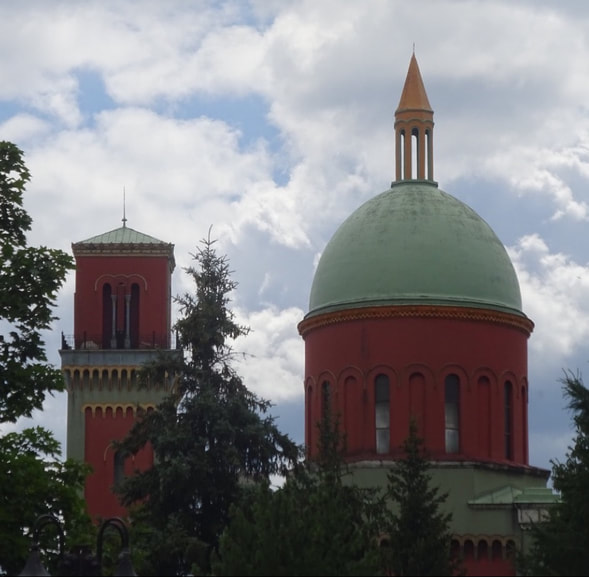
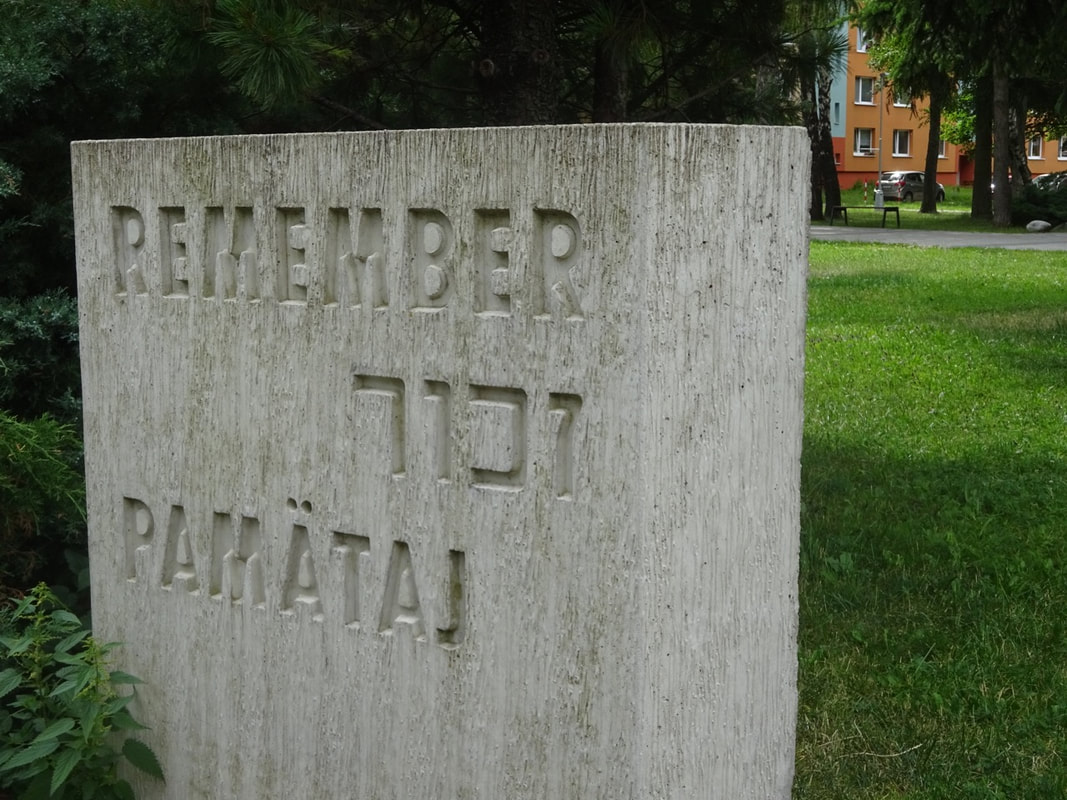



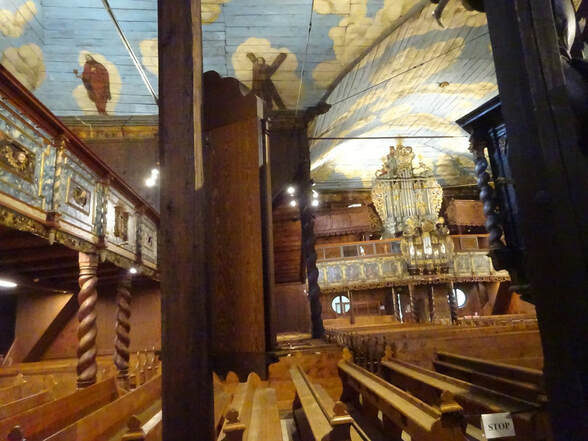








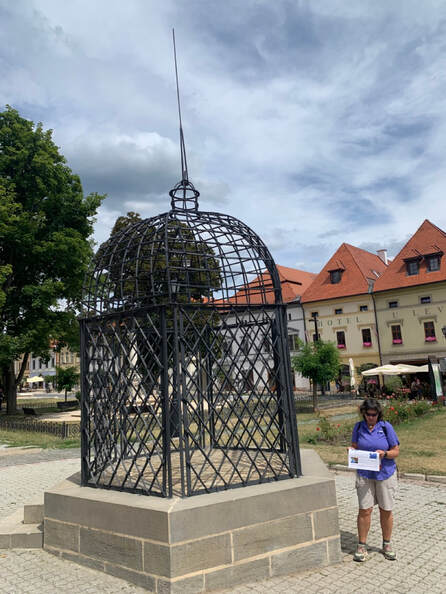







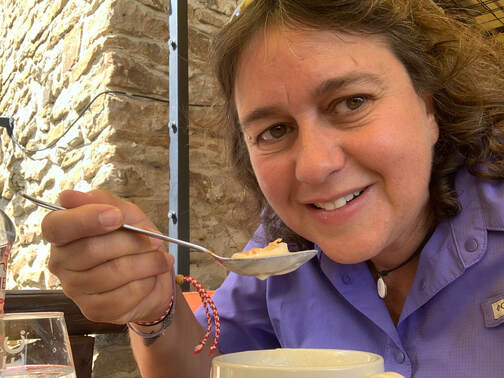

























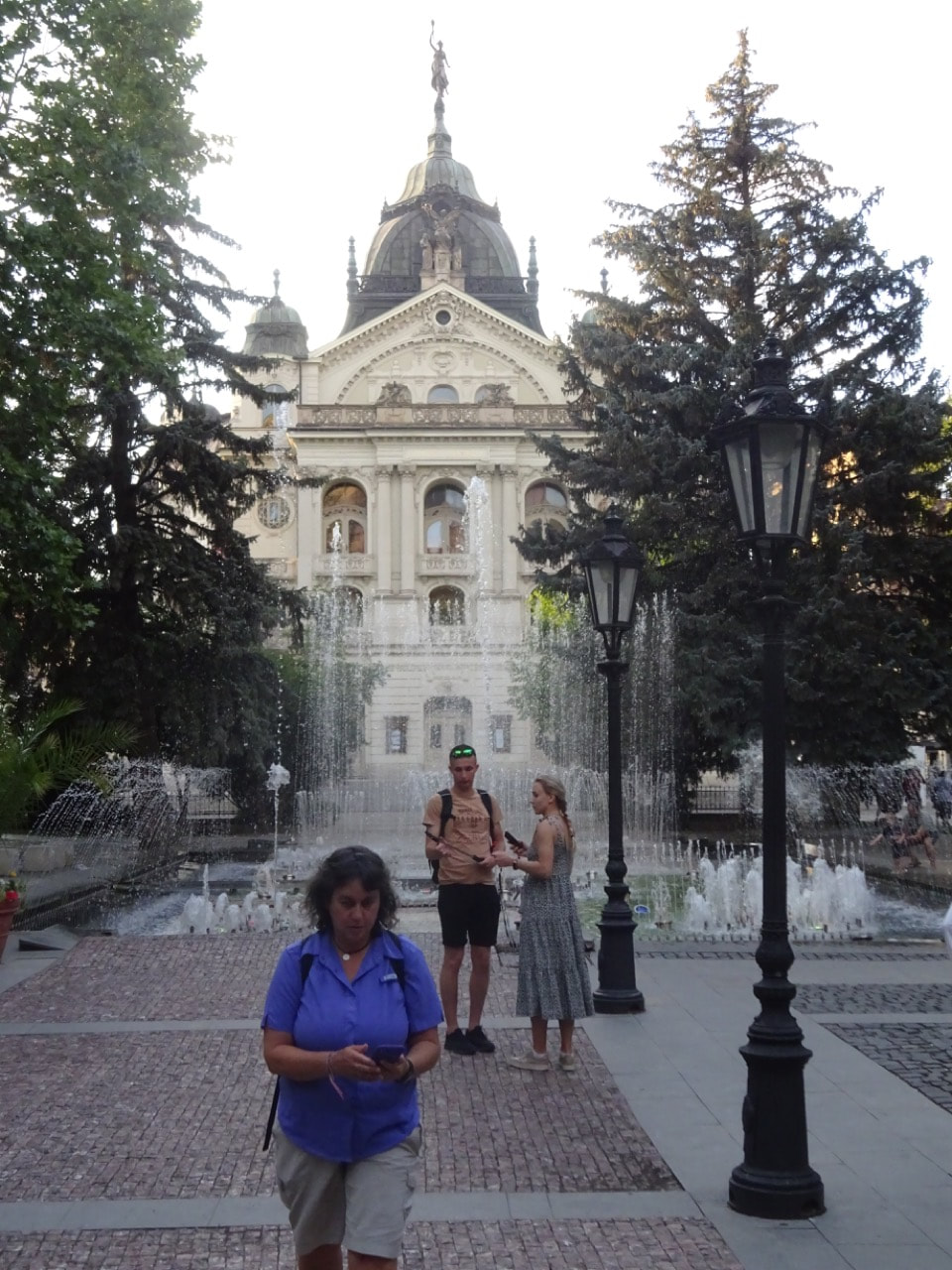







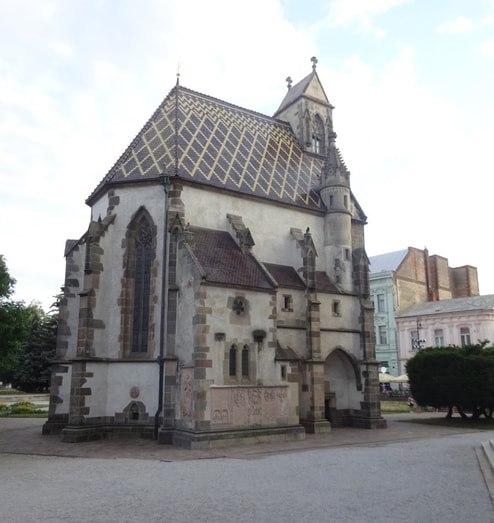
 RSS Feed
RSS Feed
